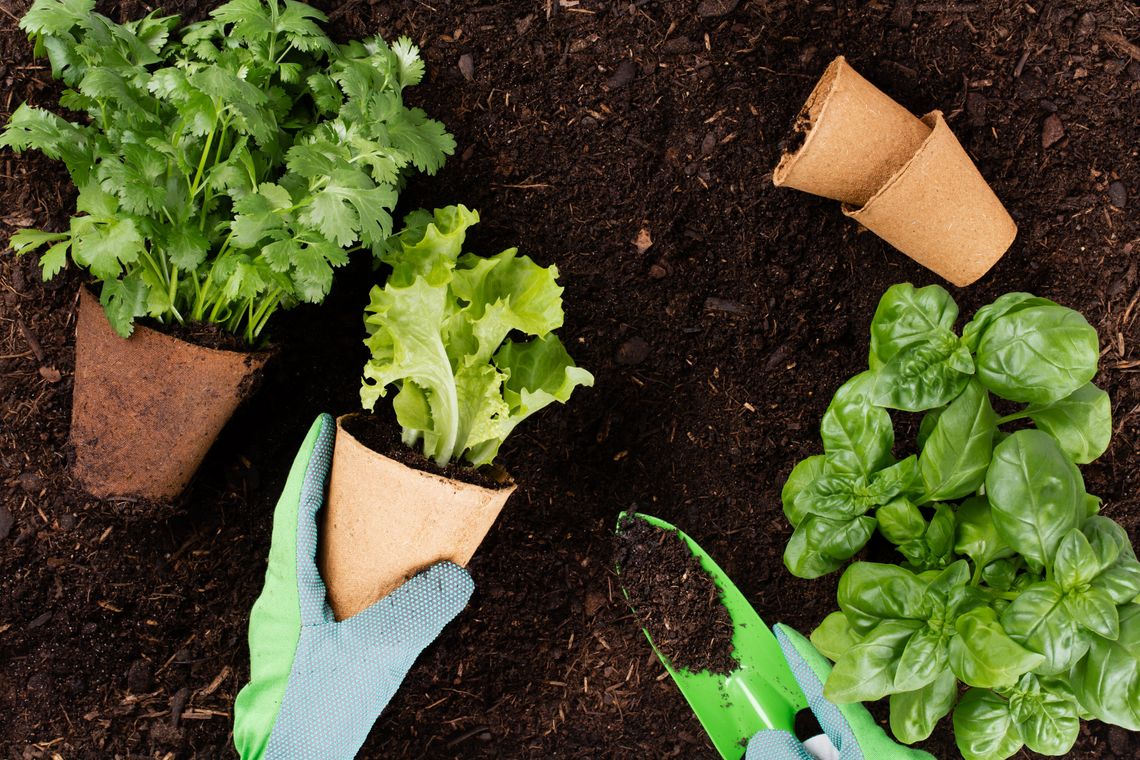The ideal garden soil is deep, loose, fertile, and well drained (internally, as well as on the surface). The ideal soil has plenty of organic matter and is free of weeds and diseases. These soils can sometimes be difficult to find, but less than ideal soils can be just as productive with proper preparation and management.
Water will move quickly through well-drained soil and never completely shut off air movement. Drainage is important, because the roots cannot develop, live and function without a constant oxygen supply. Clay soils dry slowly after a rain because their pores are small, and water moves through them slowly. Sandy soils, on the other hand, have many spaces and dry out quickly.
Clay and sandy soils can be amended by adding organic matter. Increasing the organic matter in clay soil improves the tilth, making it easier to work, and it also improves drainage. Adding organic matter to sandy soil increases the water-holding capacity and improves its fertility.
Soil and soil conditions affect the way vegetable plants grow and look. When soils are cold, wet, crusty or cloddy, the seedlings are slow to emerge, and some may not survive. Root rot diseases may take a heavy toll on seedlings, especially beans. Other soil-related plant symptoms are stunted plants, slow growth, poor color and shallow, malformed roots. Signs of poor soil structure are crusts, hard soil layers below the surface known as hardpans or fragipans, standing water and erosion.
We can increase the soil’s organic matter content by adding manure, composted leaves, sawdust, bark or peat moss. Also, turn under plant residues like sweet corn stalks and green manure crops (soybeans, rye, southern pea plants and others) after harvest. Plant residues should be free of diseases if they are to be added to the garden soil. Cover plants can be planted in the fall to prevent erosion and leaching of plant nutrients. They also provide organic matter and nitrogen when turned under in the spring.
Manures vary in nutrient level, and the amount of straw, age, exposure to weather, and degree of composting changes their composition. Be careful not to over fertilize when applying chicken litter to a garden. Use no more than 200 pounds per 1,000 square feet of garden space. Cow and horse manure is lower in nutrient content than poultry litter and can be applied at 250 to 300 pounds per 1,000 square feet.
Overuse of manures can add so much fertilizer to the soil that plant growth is harmed. Most organic materials release some nutrients quickly and the rest over time. Test the soil every year or two and make adjustments.
Source: “Mississippi Vegetable Gardener’s Guide,”, Mississippi State University Extension, Publication 3616


Comment
Comments